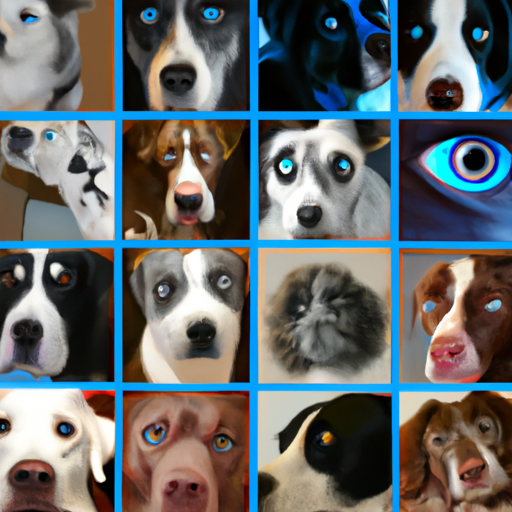There’s something undeniably enchanting about a dog with blue eyes. The icy hue isn’t just beautiful; it’s also quite rare among canines. So, what breeds are graced with this striking feature? Let’s dive in.
H2: The Genetics Behind Blue Eyes
Understanding why some dogs have blue eyes begins with a brief foray into genetics. The blue eye color in dogs is often linked to a gene called the ALX4 on chromosome 18. This gene, when it mutates, interferes with the pigment production, leading to blue eyes.
- Merle Gene: Dogs with a merle or dapple pattern have spots where pigmentation is diluted or missing. This gene can also affect eye color, leading to blue eyes or heterochromia (two different colored eyes).
- Albinism: Although rare in dogs, albinism reduces the production of melanin, which can cause blue eyes.
H2: Breeds with Blue Eyes
Several breeds are known to frequently sport blue eyes. Here are a few:
- Siberian Huskies: Arguably the most famous blue-eyed breed, the Siberian Husky is known for their striking eyes, which can also be brown or parti-colored.
- Australian Shepherds: Despite their name, these dogs were developed in the U.S. They often have blue eyes, especially those with merle coats.
- Border Collies: Blue eyes are less common but can occur, particularly in merle and mottled varieties.
| Breed | Frequency of Blue Eyes | Other Common Eye Colors |
|---|---|---|
| Siberian Husky | High | Brown, Parti-colored |
| Australian Shepherd | Medium | Brown, Green, Amber |
| Border Collie | Low | Brown, Green |
H2: The Health Implications of Blue Eyes
It’s essential to understand that blue eyes, particularly when not standard for the breed, can be linked to health issues. For instance, the merle gene can potentially cause vision and hearing problems. As a caregiver, always ensure your blue-eyed beauty gets regular vet check-ups to maintain their optimal health.
H2: The Myths Surrounding Blue-Eyed Dogs
Over the years, several myths have sprung up around dogs with blue eyes. Some people believe that blue-eyed dogs are more likely to be aggressive or that they’re more prone to health issues. While individual dogs may have health or behavior issues, it’s important to remember that these are not linked to eye color but more to genetics, upbringing, and environment.
H2: FAQ’s
1. Can a puppy’s blue eyes change color as they grow?
– Yes, puppies born with blue eyes can change color as they grow.
2. Is it common for dogs to have one blue eye and one brown eye?
– Yes, it’s called heterochromia and it’s common in several breeds like Huskies and Aussies.
3. Can dogs with blue eyes see better at night?
– No, there’s no evidence to suggest that eye color affects vision in any way.
In the end, whether your canine companion has blue eyes or not, the bond you share with them is what truly matters. As a caregiver, your role is to provide them with love, care, and understanding, regardless of the color of their eyes.



